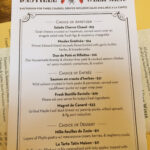Every spring, the Society for Photographic Education (SPE) annual conference serves as a vital meeting point for photography enthusiasts and professionals alike. It’s an invaluable opportunity to reconnect with peers, immerse oneself in diverse artistic perspectives, and discover groundbreaking work through portfolio reviews and the engaging portfolio walk. The 2024 conference in St. Louis, MO, was no exception, proving to be as enriching and inspiring as ever. Over the next few days, we will be spotlighting the captivating work of artists encountered during the 2024 SPE conference. Kicking off this series is the remarkable Stephen Marc and his compelling series, Street Cat Tales and Tangled Times: An American Journey Continues.
Stephen Marc stands as an Emeritus Professor of Art at Arizona State University’s esteemed Herberger Institute for Design and the Arts. His journey in education began at Columbia College Chicago after being raised in the vibrant South Side of Chicago and Champaign, IL. He joined ASU in 1998, bringing with him two decades of experience from Columbia College Chicago. Recognized for his significant contributions, Marc was honored as the Spring 2022 Stuart B. Cooper Endowed Chair in Photography at the Maryland Institute College of Art (MICA) and was named a 2021 Guggenheim Fellow. His academic foundation includes an MFA from Tyler School of Art at Temple University and a BA from Pomona College. Marc’s artistic identity is firmly rooted in documentary and street photography, alongside digital montage artistry, through which he masterfully explores American identity and the ever-evolving sense of place.
Marc’s profound exploration of American culture is highlighted by his book, American/True Colors (2020), which was awarded the Independent Publisher’s IPPY 2021 Gold Medal for Photography and was a finalist in the 2021 New Mexico-Arizona Book Awards for best art book and best multicultural book. Street Cat Tales and Tangled Times (2023) builds upon this foundation, presenting a visual narrative that weaves together digital montages and compelling photographs.
His earlier works further solidify his artistic vision, including: Urban Notions (1983), a poignant look at three Illinois communities deeply connected to his family history; The Black Trans-Atlantic Experience: Street Life and Culture in Ghana, Jamaica, England, and the United States (1992); and Passage on the Underground Railroad (2009). Notably, since 2008, Passage on the Underground Railroad has been recognized by the National UGRR Network to Freedom, a division of the National Park Service, as an Interpretative Program.
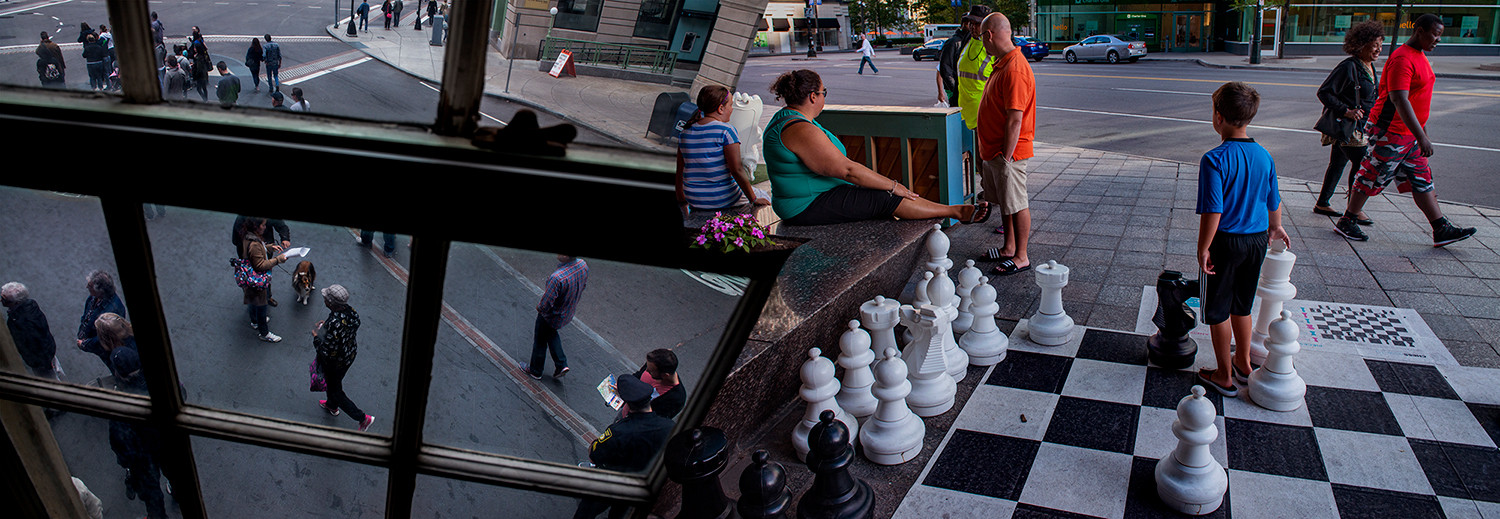 Stephen Marc's Street Cat Tales captures the urban rhythm of Detroit and Boston, blending cityscapes and human interaction.
Stephen Marc's Street Cat Tales captures the urban rhythm of Detroit and Boston, blending cityscapes and human interaction.
Street Cat Tales and Tangled Times: A Deep Dive into American Identity
Stephen Marc’s Street Cat Tales and Tangled Times: An American Journey Continues is more than just a photography series; it’s an ongoing exploration of the multifaceted layers of American identity and the ever-shifting sense of place within the nation. As a seasoned documentary and street photographer and a digital montage artist, Marc immerses himself in the eclectic tapestry of urban life, capturing everything from the mundane routines of daily existence to the vibrant energy of special events. His lens keenly observes style, character, and the prevailing social atmosphere, revealing the subtle nuances of American culture.
Marc’s focus frequently rests on public spaces, meticulously documenting socio-cultural signifiers that range from fleeting pop culture trends—reflected in hairstyles, body art, and fashion—to enduring aspects of national history and seasonal traditions. He also captures the zeitgeist of current news events, observing how individuals navigate the delicate balance between expressing their individuality and seeking belonging within a larger societal context.
Through his work, Marc delves into the intricate ways Americans shape their environments, define themselves, and recognize each other. He acknowledges the rich racial and cultural diversity, the undercurrents of socio-political tension, the weight of historical layers, and the constant state of flux that characterizes American society. His artistic challenge lies in uncovering the unifying threads that bind Americans together, despite or even within their apparent differences. He seeks to illuminate the connections people forge with places and their interactions with one another, all while navigating the inherent complexities of coexistence in a diverse nation.
As a Black photographer, Marc feels a profound responsibility to address the collective American identity, particularly during this period of complex transitions and heightened polarization. He positions his work as a contemporary dialogue with seminal American visual surveys, most notably Walker Evans’ American Photographs and Robert Frank’s The Americans. While traversing the diverse landscapes and social divides of the country, Marc’s photography stands as both an homage to and a critical update of these foundational works. He brings a unique cultural background perspective to the forefront, enriching the ongoing visual conversation about American identity.
His recent publications, American /True Colors (2020) and Street Cat Tales and Tangled Times (2023), along with his ongoing projects, represent his sustained commitment to documenting American culture. He achieves this through careful observation of social dynamics, references to the nation’s rich history, and by drawing upon his own lived experiences as a Black American. Marc views photography as an interpretative visual document, and he employs digital montage techniques to expand the visual narrative, exploring innovative strategies for combining photographs while maintaining varying degrees of photographic realism. Ultimately, his work is intended as a valuable contribution to the ever-expanding archive of the American experience, offering profound insights into the nation’s evolving identity.
 Stephen Marc captures the essence of New York City street life in a single frame, showcasing the city's dynamic energy.
Stephen Marc captures the essence of New York City street life in a single frame, showcasing the city's dynamic energy.
Daniel George in Conversation with Stephen Marc: Unpacking the American Survey
Daniel George: Your current project has evolved from earlier bodies of work focused on American culture. What sparked your extensive survey of America and its people, which began around 2007?
Stephen Marc: In many respects, my artistic endeavors have consistently revolved around projects that explore American culture and our connections to this nation. My current survey project is deeply rooted in a desire to engage with and respond to the landmark survey projects that have shaped our visual understanding of America. I felt a strong urge to pay homage to, update, and offer a critical perspective on these foundational works, aiming to develop my own unique view of the country during another pivotal moment in its history.
America has undergone significant transformations since the eras of Walker Evans’ American Photographs and Robert Frank’s The Americans. Therefore, I wanted to re-examine how we define ourselves and recognize each other as Americans in this contemporary context. Their perspectives on the country are inherently different from my own lived experiences. Equally important is the disparity in how the country perceives me as a Black American.
Furthermore, by the time I embarked on my American survey projects, I had gained considerable life experience and had already traveled extensively across the nation—by car and plane, often utilizing rental cars—for various purposes, including earlier projects. The Underground Railroad project, in particular, required extensive travel throughout the American South, providing me with invaluable insights and perspectives.
During my work on American/True Colors and Street Cat Tales, I observed a recurring sentiment from many who encouraged me to focus solely on Black America in my projects, as if exploring broader American themes was somehow outside my designated artistic lane. However, I was deeply committed to exploring a more inclusive and collective view of America. As an African American photographer, this vision naturally encompassed Black America, but within the wider cultural scope of my own lived experiences and observations.
Prior to my last two books, I had already completed The Black Trans-Atlantic Experience, which documented an African diaspora journey across Ghana, Jamaica, England, and the United States, tracing contemporary echoes of the British Colonial Slave Trade Routes. Additionally, Passage on the Underground Railroad and subsequent related works directly addressed Black history, which I firmly believe is integral to American history—not merely a segregated chapter or footnote.
The Allure of the Streets: Capturing Narrative in the Urban Landscape
DG: I’m intrigued by your dedication to documentary photography, particularly your focus on street photography. What draws you to the streets? What narrative possibilities do they offer that you can’t find elsewhere? Where do you think this impulse to photograph people originates?
SM: The vibrant energy of street photography and urban life was a significant factor in my decision to return to Chicago after teaching for 26 years at Arizona State University, following two decades at Columbia College Chicago. My time in the Phoenix area was rewarding, but I felt I had accomplished most of my artistic goals there. Upon retirement, returning to my roots in Chicago felt like a natural and compelling next chapter. Chicago, often hailed as the second-best city for street photography, offered a renewed sense of creative inspiration.
My fascination with photographing people on the streets predates my formal pursuit of photography. Long before I picked up a camera, I spent years simply exploring the streets of Chicago and Champaign-Urbana. I would wander on foot, sometimes running, or cycle through neighborhoods, even driving around, just to see what I could discover beyond my immediate surroundings. This innate curiosity about the urban landscape and its inhabitants laid the groundwork for my future photographic endeavors.
When I finally declared my intention to become a photographer in college, the announcement surprised many, except for one close artist friend. His response was particularly insightful: “You’ve been a photographer as long as I’ve known you; it’s about time you learned how to use a camera!” This comment underscored the idea that my inherent curiosity and observational nature were already aligned with the essence of photography, even before I had the technical skills.
 Stephen Marc's street photography in Phoenix, 2021, captures candid moments of everyday life in the city.
Stephen Marc's street photography in Phoenix, 2021, captures candid moments of everyday life in the city.
Building Bridges Through the Lens: Understanding and Trust in Street Photography
DG: When we discussed this series, it became clear that you deeply care about the people you photograph and that they, in turn, trust you, even when holding differing political or social views. What insights can you share about understanding your subjects and their motivations or challenges?
SM: I genuinely enjoy immersing myself in the energy of the streets and special events, observing the unfolding scenes, interacting with people, and capturing fleeting moments through my photographs. My conversations with people are driven by a desire to get to know them better, to understand their perspectives, and to gain deeper insights into the diverse places I photograph. I approach these interactions with respect, listening to what people are willing to share without judgment.
I’ve come to use the term “special friends” to describe individuals I deeply appreciate – people who may not share my background, beliefs, or way of life, but who are open to engaging in conversations with me and/or allowing me to photograph them. These encounters are incredibly enriching. They broaden my understanding of events, group dynamics, individual perspectives, and the nuances of different communities. Without these direct interactions, my photography would risk becoming merely an illustration of my own preconceived notions and biases.
I’ve had the privilege of engaging in incredibly meaningful, insightful, and enjoyable conversations and photographic exchanges that might seem improbable, especially considering my identity as a Black photographer. These experiences underscore the power of human connection and the potential for understanding across diverse backgrounds.
Technique and Vision: The Panoramic Format and Digital Montage
DG: Tell us a bit about your artistic process, particularly your use of the panoramic format and digital montage. What significance do these technical approaches hold in relation to your work?
SM: American/True Colors features 250 photographs, a deliberate nod to the upcoming 250th anniversary of the United States in 2026. It also incorporates digital montages, strategically placed as visual accents between text pages and at the beginning and end of the book. In contrast, Street Cat Tales and Tangled Times, its follow-up, alternates digital montages and traditional photographs throughout its pages, creating a dynamic visual rhythm.
The photographs in both series adhere to the conventional 2:3 aspect ratio, while the digital montages are presented in a distinctive 9:26 ratio. This choice of format for the montages originated from my experience creating graphics for bus panels for a CEPA exhibition, where this elongated ratio was the standard for displays above bus seats. Interestingly, this ratio is just slightly shorter than the 1:3 ratio used by several panoramic film cameras of the past, essentially resembling a double-wide 35mm film format.
Utilizing these two distinct formats—the 2:3 for straight photographs and the 9:26 for montages—allows viewers to easily differentiate between the unaltered photographic images and the post-production constructed images. As a photographer, I view photographs as interpretative fragments of reality, visual documents that capture specific moments in time. As a digital montage artist, I am drawn to creating visual short stories. I explore various strategies and objectives for combining photographs, ranging from subtle enhancements to more complex manipulations, to extend the visual narrative. This process is always mindful of the constructive nature of memory and the role of the photographer as an informed witness.
Although I have been working digitally since 1992, my serious exploration of compositing street photographs began in 2019. This immersive “woodshedding” approach to virtual travel and image-making proved to be a natural progression in my artistic practice, and it was particularly crucial in maintaining my creative momentum throughout the Covid-19 pandemic.
These digital montages, which I casually refer to as “street story montages,” typically combine between two and seven individual photographs. Some of these Photoshop-created images resemble chronophotographic sequences or panoramic stitches, while others employ a wider range of techniques to intertwine disparate situations and events, occasionally spanning several years in their visual narratives.
 Stephen Marc's digital montage, Balt-Rochester Jump_2022, showcases his innovative approach to visual storytelling.
Stephen Marc's digital montage, Balt-Rochester Jump_2022, showcases his innovative approach to visual storytelling.
Photography in Turbulent Times: Reflection and Resilience
DG: For me, the photographs in this series powerfully highlight the turbulence within American culture, particularly in the wake of events like the Covid-19 pandemic, the January 6th insurrection, economic instability, and increasing political division. Do you believe photographs, especially these, can offer any form of relief in such times?
SM: I’m not certain that my photographs can provide direct relief from the challenges we face, but I do believe that the work serves as evidence of the resilience of the American people. My approach is to seek out the extraordinary within the ordinary, to document the celebratory rituals of our culture, and to offer social critique grounded in reality. By documenting how everyday life persists despite the surrounding turbulence, I hope to provide a ground-level perspective on the common ground we share, alongside our differences.
As long as people are engaging with each other in person, socializing in public spaces, collaborating on projects, communicating openly—especially with someone who may hold different viewpoints, like myself—and demonstrating at least a degree of tolerance for diversity, then I believe there is reason for optimism. These interactions, captured in my Street Cat Tales, suggest an underlying resilience and a persistent hope for connection amidst division.
[ Stephen Marc's photograph from Baltimore in 2022 offers another glimpse into his street tales.
Stephen Marc's photograph from Baltimore in 2022 offers another glimpse into his street tales.
[ Stephen Marc's photograph from Baltimore in 2022 offers another glimpse into his street tales.
Stephen Marc's photograph from Baltimore in 2022 offers another glimpse into his street tales.
 Stephen Marc's "DC Anti_Vax Firefighters_2022" captures a moment of social and political tension in Washington D.C.
Stephen Marc's "DC Anti_Vax Firefighters_2022" captures a moment of social and political tension in Washington D.C.
 Stephen Marc's "DC Statue of Liberty_2022" juxtaposes iconic symbols with contemporary street life.
Stephen Marc's "DC Statue of Liberty_2022" juxtaposes iconic symbols with contemporary street life.
[ Another street scene from Phoenix, captured by Stephen Marc, showcasing the diversity of urban life.
Another street scene from Phoenix, captured by Stephen Marc, showcasing the diversity of urban life.
[ Another street scene from Phoenix, captured by Stephen Marc, showcasing the diversity of urban life.
Another street scene from Phoenix, captured by Stephen Marc, showcasing the diversity of urban life.
 Stephen Marc's "PHX-Stare-Down" captures a powerful and intriguing moment of human connection in Phoenix.
Stephen Marc's "PHX-Stare-Down" captures a powerful and intriguing moment of human connection in Phoenix.
[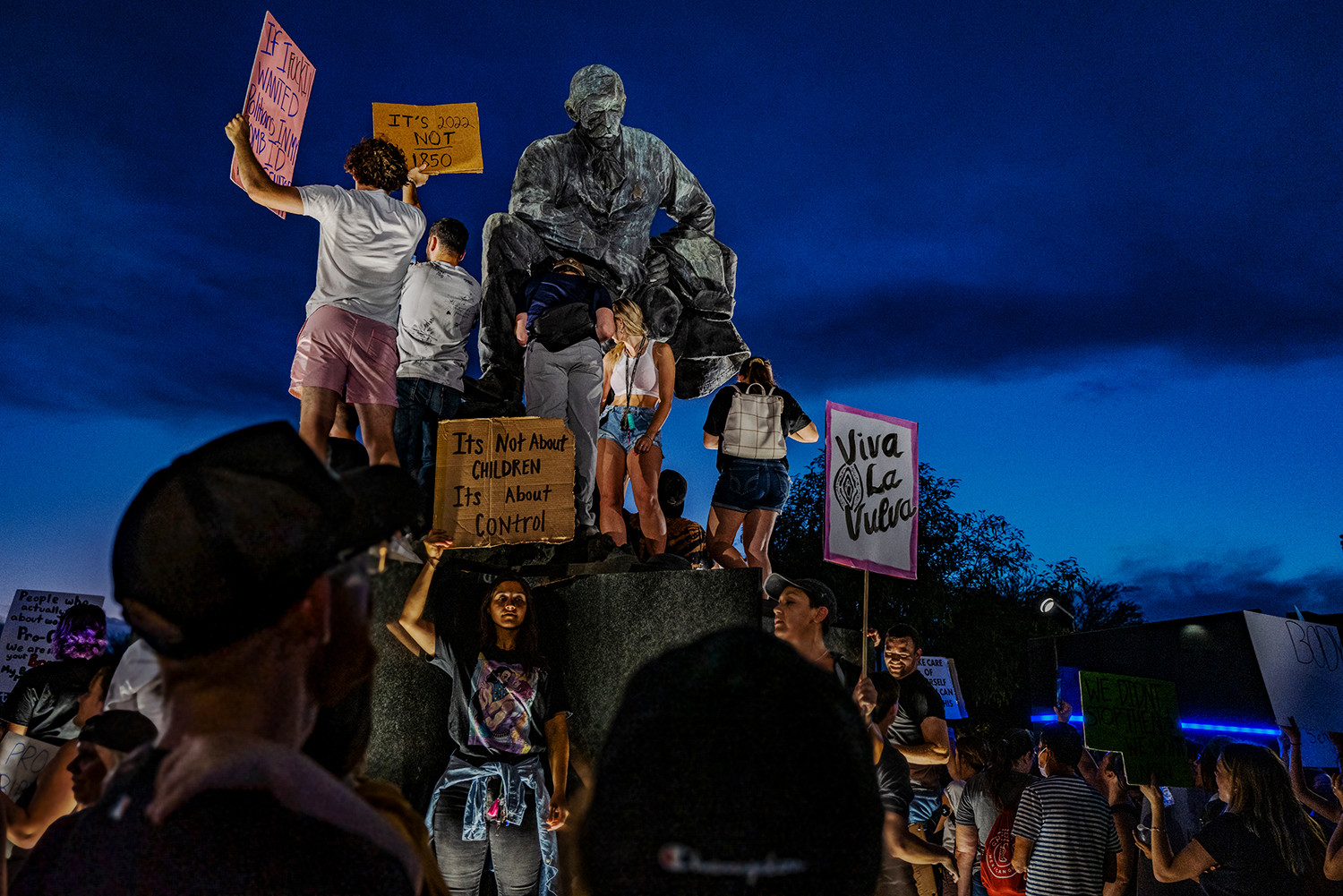 Another photograph from Stephen Marc's Phoenix series, continuing to explore the city's street tales.
Another photograph from Stephen Marc's Phoenix series, continuing to explore the city's street tales.
[ Another photograph from Stephen Marc's Phoenix series, continuing to explore the city's street tales.
Another photograph from Stephen Marc's Phoenix series, continuing to explore the city's street tales.
[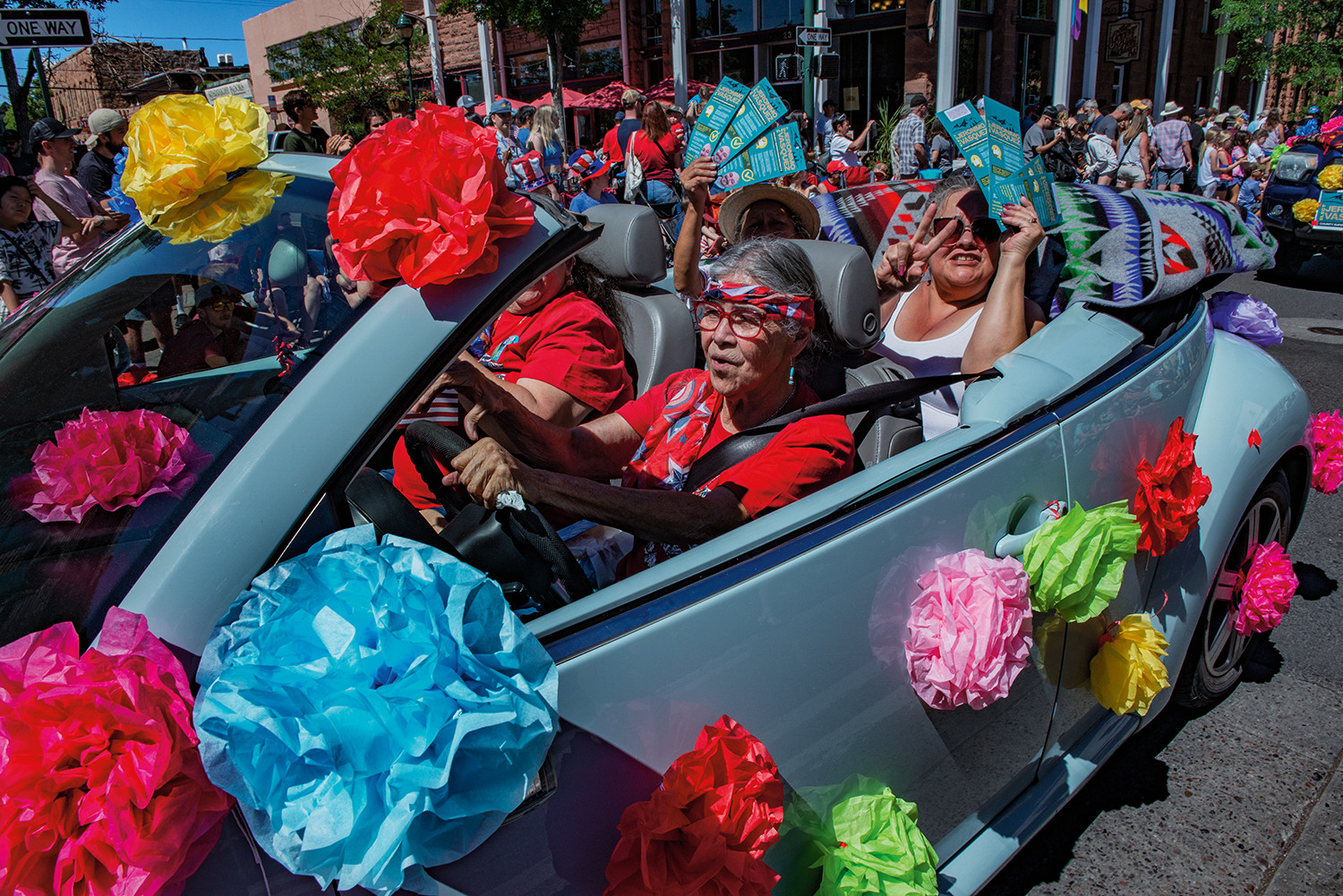 Another perspective from Stephen Marc's Flagstaff series, expanding his street tales beyond major cities.
Another perspective from Stephen Marc's Flagstaff series, expanding his street tales beyond major cities.
[ Another perspective from Stephen Marc's Flagstaff series, expanding his street tales beyond major cities.
Another perspective from Stephen Marc's Flagstaff series, expanding his street tales beyond major cities.
[ Another scene from Stephen Marc's San Francisco collection, illustrating the city's diverse street life.
Another scene from Stephen Marc's San Francisco collection, illustrating the city's diverse street life.
[ Another scene from Stephen Marc's San Francisco collection, illustrating the city's diverse street life.
Another scene from Stephen Marc's San Francisco collection, illustrating the city's diverse street life.
[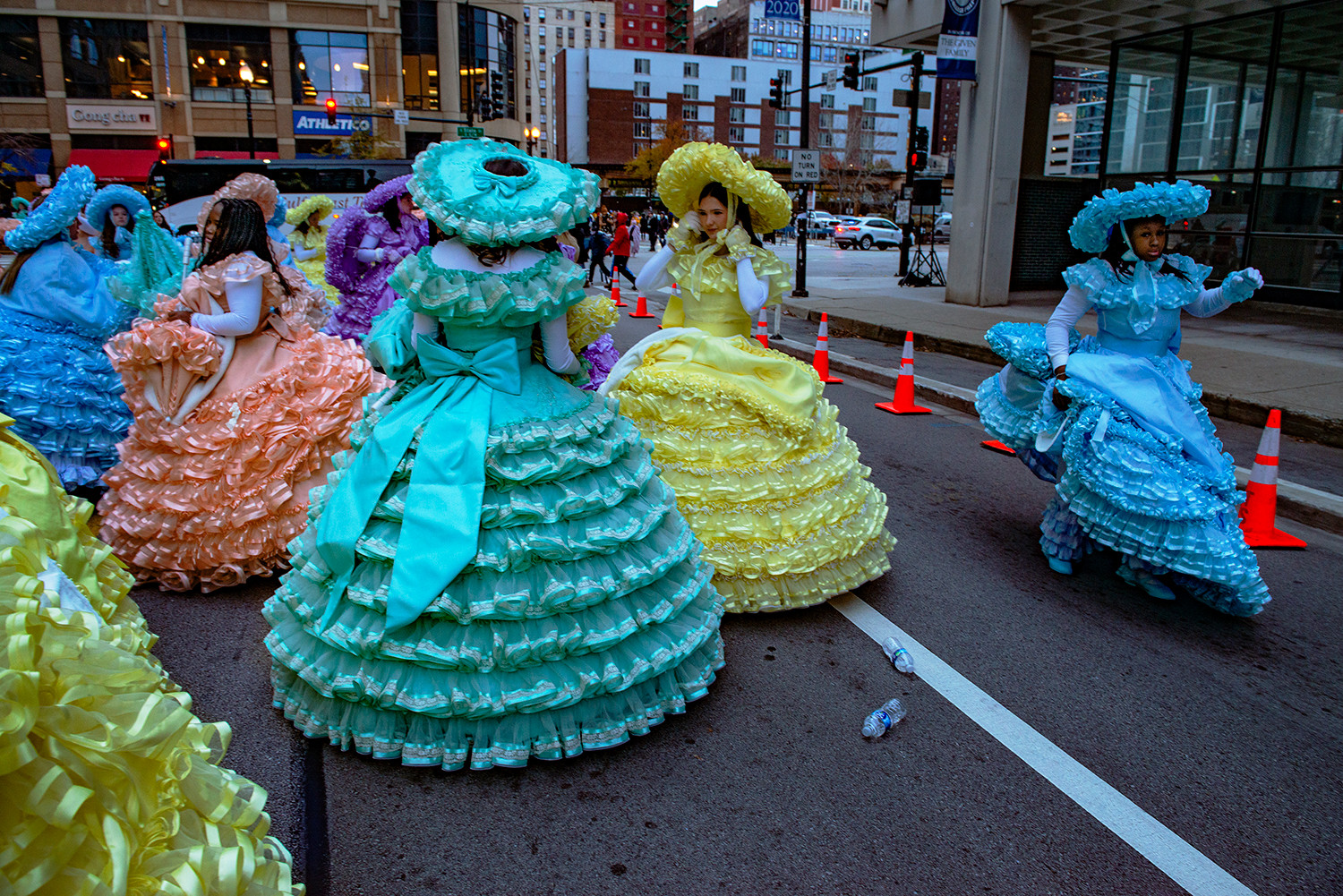 Another Chicago street scene, not included in the book, showcasing Stephen Marc's continuous documentation of urban life.
Another Chicago street scene, not included in the book, showcasing Stephen Marc's continuous documentation of urban life.
[ Another Chicago street scene, not included in the book, showcasing Stephen Marc's continuous documentation of urban life.
Another Chicago street scene, not included in the book, showcasing Stephen Marc's continuous documentation of urban life.
[ Another recent Chicago street photograph from 2025, not in the book, highlighting Stephen Marc's ongoing project in his hometown.
Another recent Chicago street photograph from 2025, not in the book, highlighting Stephen Marc's ongoing project in his hometown.
[ Another recent Chicago street photograph from 2025, not in the book, highlighting Stephen Marc's ongoing project in his hometown.
Another recent Chicago street photograph from 2025, not in the book, highlighting Stephen Marc's ongoing project in his hometown.
 Stephen Marc's Chicago 2025 photograph, not in the book, presents another compelling street tale from his ongoing work.
Stephen Marc's Chicago 2025 photograph, not in the book, presents another compelling street tale from his ongoing work.
[


